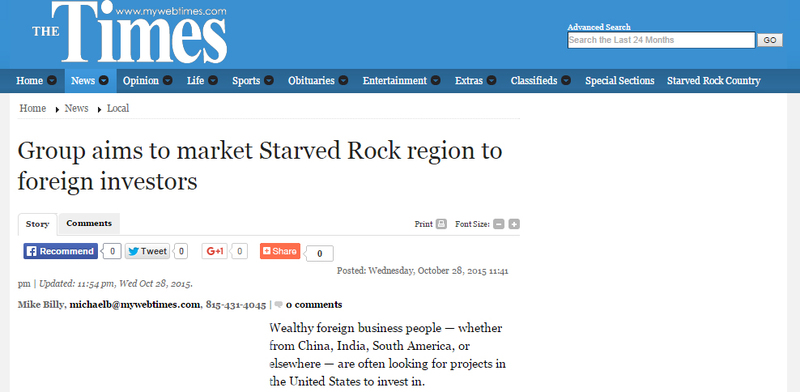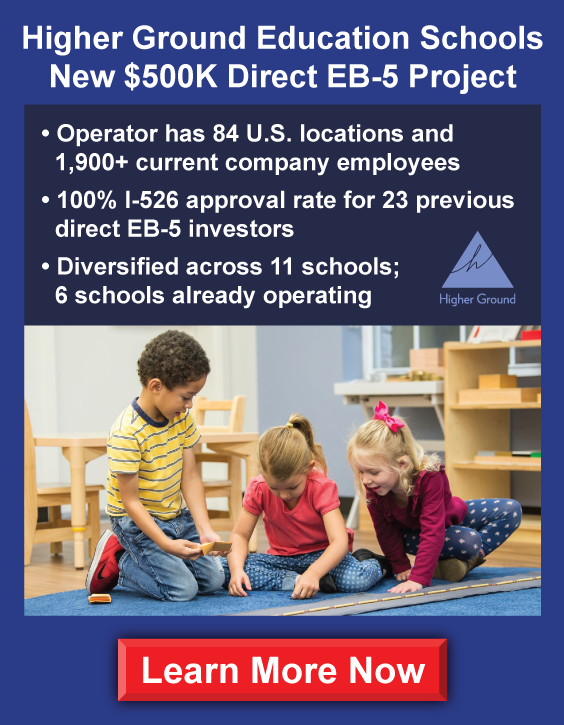Group aims to market Starved Rock region to foreign investors
Wealthy foreign business people — whether from China, India, South America, or elsewhere — are often looking for projects in the United States to invest in.
But it isn't necessarily America's economy that is attracting them.
In many cases, those investors are looking to take advantage of the federal government's EB-5 Immigrant Investor Program, which expedites the green card process for qualifying foreigners who invest a minimum amount of money in a project in the United States.
If a local economic development-focused organization has their way, those investors will have their focus turned toward the Starved Rock region.
Starved Rock Country Alliance, a group started by local entrepreneurs in 2013, has formed a regional center to promote La Salle, Livingston, Bureau and Putnam counties to those foreign investors.
The Illinois Valley Regional Center, which was approved by the federal government, is a requirement for local developers to go after money through the EB-5 program. It also will have the advantage of promoting the region to those investors.
"The first step has been taken," said Peter Limberger, an Ottawa businessman who helped start the Alliance. "It's a major step that took more than a year and quite some investment to get open."
He added that the center was opened using private funding.
For foreign investors looking at projects in Starved Rock Country the minimum investment will be $500,000 per investor. For each $500,000 raised through the EB-5 program at least ten jobs must be created.
"The main goal of this program is to create jobs," Limberger said. "So the investment is truly tied to how many jobs it creates."
Once the funds are approved and the job creation numbers are verified, the investor is then able to receive a Green Card.
"Through a fairly complicated system at the end the investor and their immediate family will get a Green Card," Limberger said. "They have to be approved by the federal government, including background checks, and everything follows a fairly involved process."
Limberger said about 80 percent of the money raised through the program typically comes from China.
The Illinois Valley Regional Center will be located in the North Central Illinois Council of Governments office, 613 W. Marquette St., Ottawa.
Kevin Lindeman, economic development district director at NCICG, said one of the main goals of the regional center will be to help new projects get off the ground.
"It's another tool in the economic development tool box for projects to get funding," Lindeman said. "Especially since the recession hit in 2008, funding isn't always the easiest to find."
Now that the regional center is in place, the next step is to find EB-5 eligible projects that will create jobs. The regional center will then be used to connect foreign investors with potential projects.
"Anybody who wants to build something — to invest in something — and would like to pursue this route to get some financing through EB-5 can now come to the regional center," Limberger said.
Those developers will then be guided through the process to ensure that their projects qualify.
Businesses in the service industry, like hotels and restaurants, are best suited for EB-5 investments since the job creation numbers can more easily be shown, Lindeman said.
"It's easier to create 10 jobs when you're building even a smaller hotel," he said. "But to get a $500,000 investment to do a manufacturing line is not necessarily as easy because that $500,000 doesn't go as far and you don't necessarily create 10 jobs."
The EB-5 program typically would be one source of funding for a project, Limberger said, usually at around 50 percent of total expenses.
In St. Charles, Mich., which has a population of about 2,000, developers used the EB-5 program to fund a 92-room hotel and marina.
Fred Leiner, who was a developer on the project, said about two-thirds of the funding came from the EB-5 program.
One of the main downsides of the program is the wait to receive funds, Leiner said. It can take longer to receive the funds than a traditional bank loan.
This can require a project to get short term funding to bridge the gap.
"We had to go to a bank to get interim financing to start construction when we wanted to," Leiner said.
There are two main benefits to the program, Leiner said. First, it's a relatively low cost way to finance a project, as far as fees and interest payments go.
"That's simply because EB-5 investors are looking for a Green Card and less concerned about dividends and interest on money," he said. "They want money back on their investments, but they are less concerned about earning high dividends or rates of return."
The other advantage is the EB-5 loans don't require a personal guarantee from developers, Leiner said. Especially with small and medium size real estate projects, banks sometimes require a personal guarantee, which means the banks can go after the individual developers if they don't recover their investments.
"That happened frequently after the real estate market crashed in 2007 and 2008," he said. "Banks that made loans went after principals to get their money back."
Once it is determined that a project is eligible for EB-5 funding it then has to be presented to foreign investors.
Leiner said overseas investors are just as discerning as banks and traditional investors when looking for projects, because they don't want a project to fail before they can recoup their money.
That's why Limberger helped start the Illinois Valley Regional Center. To promote the four-county region overseas, with an office that will be opened in Beijing, China, to specifically target Chinese investors.
Limberger sees the program as a way to start a "snowball effect" that will lead to other investment in Starved Rock Country.
"When one investment is coming up others will follow," he said. "It's truly a wonderful part of economic development.
"Some people are afraid another business might be a competition to themselves, but I am 100 percent convinced that business attracts business."
Mentions
States
- Illinois
Videos





Subscribe for News
Site Digest
Join Professionals on EB5Projects.com →
Securities Disclaimer
This website is for informational purposes only and does not constitute an offer or solicitation to sell shares or securities. Any such offer or solicitation will be made only by means of an investment's confidential Offering Memorandum and in accordance with the terms of all applicable securities and other laws. This website does not constitute or form part of, and should not be construed as, any offer for sale or subscription of, or any invitation to offer to buy or subscribe for, any securities, nor should it or any part of it form the basis of, or be relied on in any connection with, any contract or commitment whatsoever. EB5Projects.com LLC and its affiliates expressly disclaim any and all responsibility for any direct or consequential loss or damage of any kind whatsoever arising directly or indirectly from: (i) reliance on any information contained in the website, (ii) any error, omission or inaccuracy in any such information or (iii) any action resulting therefrom.



